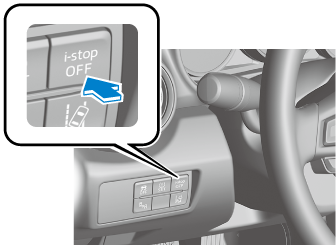Ignition Switch
Starting the Engine
Turning the Engine Off
i-stop (Some Models)
i-stop OFF Switch

By pressing the switch until a beep sounds, the i-stop function is turned off and the i-stop warning light (amber) in the instrument cluster turns on. By pressing the switch again until the beep sounds, the i-stop function becomes operational and the i-stop warning light (amber) turns off.
If the engine is stopped with the i-stop function cancelled, the i-stop function becomes operational when the engine is started the next time.
Close Note

View Note



 Read this first
Read this first



















